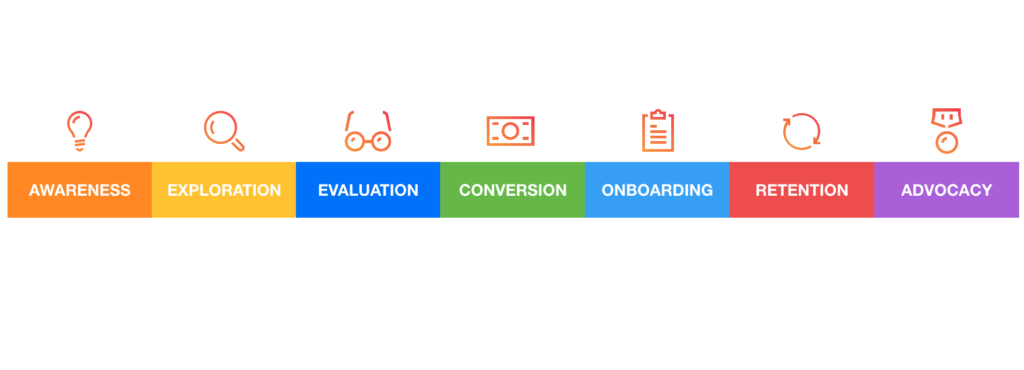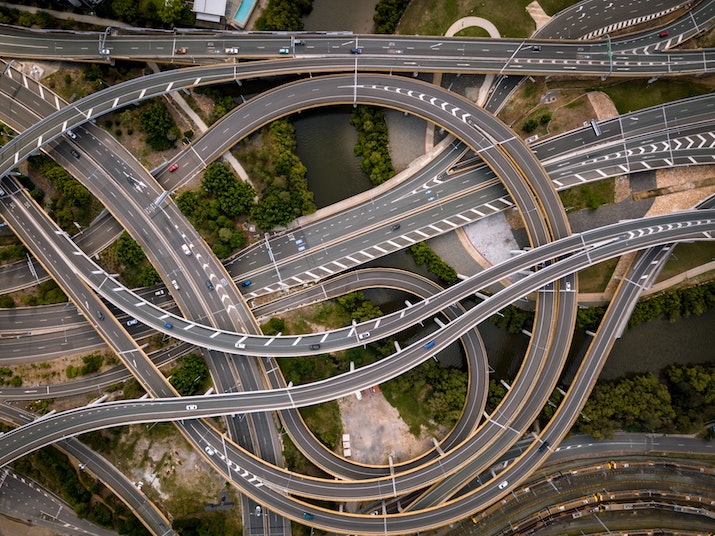Your customer journey is hyper-specific to your business and is one of the most important things to clearly identify and develop. Not only as it pertains to marketing, but to your business strategy as a whole.
Great CX, or Customer Experience, is a non-negotiable. In the past few years, it has become a key differentiator between a brand and its competitors.
Providing top notch customer experience has to start with understanding the journey your customer is on, from even before they know who you are, to the moment they decide to purchase from you and beyond.
Why is Customer Journey Mapping so Important?
Salesforce defines customer journey mapping as ‘a visual representation of every experience your customers have with you.’ One reason customer journey mapping is so important is because of the impact it has on CX, or, Customer Experience. It’s contained right there in the definition!
Consider that a few years ago, the Customer Experience Impact Report found that 89% of consumers began doing business with a competitor following a poor customer experience. Customer expectations are higher than ever and we wouldn’t be surprised if this percentage continues to increase going forward.
The lifeblood of your business literally depends on your customers having a great experience with you, and mapping your customer journey allows you to ensure great CX throughout their entire relationship with your company.
This is Not One-Size-Fits-All
Depending on your business and the language you want to apply to your customer journey mapping, there are a few different approaches to identifying the stages of your customer journey.
At its most basic, we’ve seen the journey boiled down to 3 stages – Awareness, Consideration and Conversion.
While these can provide a great starting point, often times, even for a simple business, the journey is more complex. So we like break those stages out even further.
Remember, it’s not one-size-fits-all, but the stages shared below will give you the framework to begin developing your customer journey map.

An Overview of Customer Journey Stages
It’s important to note, the timeline for the journey is different for every business and every customer. For example, the larger the purchase, the longer it may take for a customer to go through each stage.
Additionally, not every customer will go linearly, one by one, through each of these stages, but for all intents and purposes, the journey you define using the stages below will be the most logical path.
Awareness
This first stage takes you back to before a consumer even knows who you are. It aims to find the trigger point that will lead to this person becoming aware of you.
How does the individual discover their need for the product or service you provide? For example, if you sell car insurance, the trigger point for becoming aware of their need would probably involve the consumer in the process of buying or leasing a car.
Exploration
After they become aware of their need, the consumer usually goes through an exploratory phase. Here, they are starting to do some research into you and your competitors. They may follow you on social media or sign up for your emails. But remember, they are most likely doing the same with your competitors.
Evaluation
Here, the prospect is more seriously evaluating their options, potentially getting a quote from you or wanting a demo of your product or service. They may start to narrow down their options based on any number of touchpoints they’ve had with you so far. Are you providing them with value and giving them peace of mind about the type of business you are? These are the things that create trust between you and a potential customer.
Conversion
The prospect has now decided from what they’ve experienced and researched, that you are the company they’ll choose. Congrats! This stage focuses on such things as ease of transaction, etc. Have you made sure the process to buy from you is as frictionless as possible?
Onboarding
The stage after conversion and before retention is not always broken out on its own, but we think it’s important enough to be its own stage! It might not be called ‘Onboarding’ for your business, but just think of it as the first interactions a customer has with you or your product after they have converted.
It’s the moment in the customer journey where you really need to ‘WOW’ the customer, so they don’t have buyers’ remorse and so they easily move into the next stage. An exceptional onboarding (or first-time) experience can mean the difference between a long-term successful relationship with a customer or a quick churn.
Retention
From there, the goal is to create retention or repeat buyers. What do you need to provide to this customer if they are going to consider buying from you again in the future, consider retaining your service month in and month out, or use your App regularly?
Advocacy
The ultimate goal for every business is to reach even more people, and since consumers tend to trust their peers even more than what a business advertises about itself, you need to turn each customer into a raving fan. In this stage, you’ll explore how you can encourage your new loyal customer to tell their friends and family about you, such as offering incentives for each referral they bring to you.
You’ll also want to provide friction-free ways for them to spread the word about you over social media or through online reviews to reach even more potential customers!

Customer Journey and CX, Intertwined
As we already discussed above, CX and customer journey mapping are completely intertwined. For every stage of the journey, there are opportunities to focus on exceptional Customer Experience.
In each stage, you’ll identify things such as your desired customer behavior within that stage, the problems they are facing, the goals they are trying to accomplish, and what they are currently thinking and doing in that particular stage.
These are largely assumptive at first, but through research, talking to real customers, and developing your buyer personas, these assumptions become evidence-based.
Additionally, for each stage you’ll map out how you will interact with the customer, the value you can provide, and tactics and technology needed to reach the customer effectively so they take your desired action.
The end goal is to know exactly what marketing you need for each stage of your customer journey, and how that marketing tactic meets the needs of your customer. This way of strategizing your marketing goals and tactics is highly effective whether you are a large, multi-national corporation or a small local business.
Take email marketing, for example. We all know email marketing is an important marketing strategy. But what’s less understood is how this one type of marketing can be applied across the journey, and how different it looks at each stage. There are nurture emails, transactional emails, onboarding emails and so much more! Each type of email at each stage is a chance to provide value and an excellent customer experience.
Conclusion
Delivering great customer experience at each stage of the customer journey is key to your success. Without it, a prospect quickly realizes they have other options, who are just a quick Google search away.
Many companies (or even other marketing agencies!) want to jump right into tactics they think will work because it seems to be working for others. But it is crucially important to start with a smart and well-developed strategy that considers each stage your potential customer will find themselves in.
This way, you can anticipate how to be the ones to fulfill their needs, give them an amazing customer experience, and create loyal, raving fans of you and your business.

